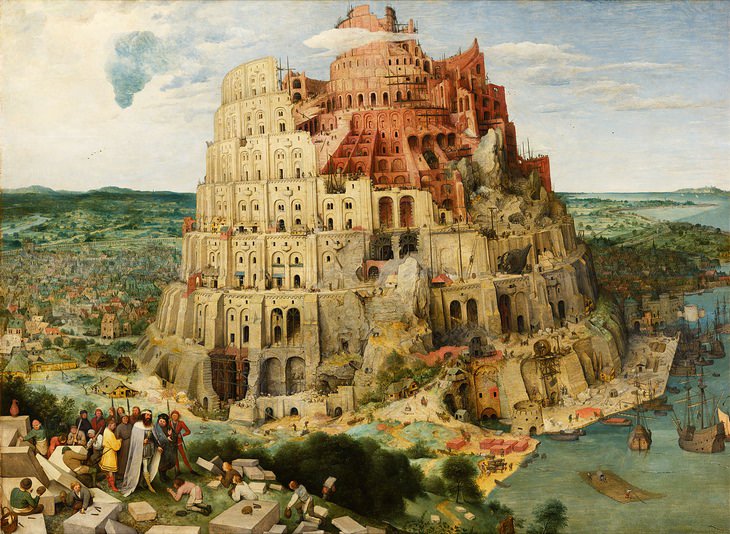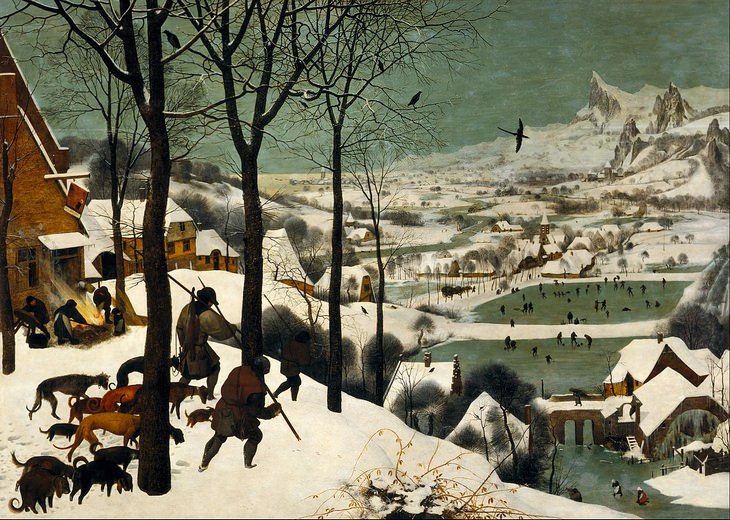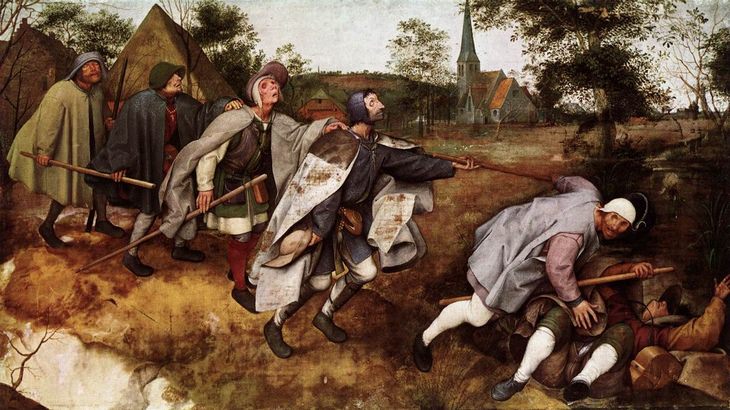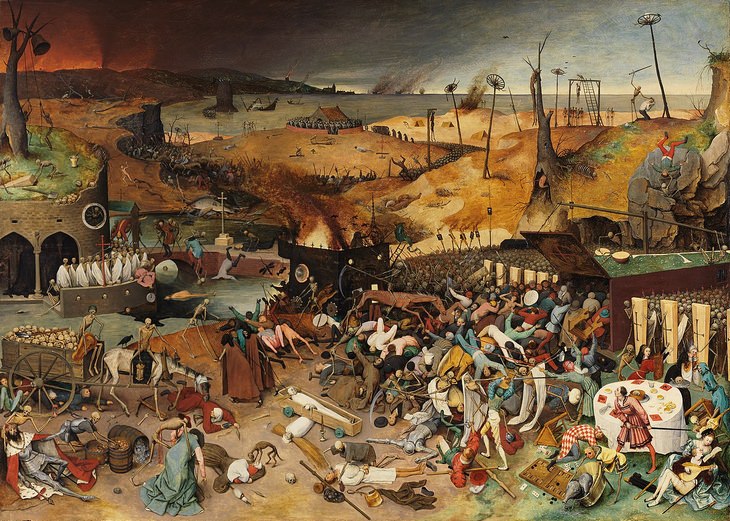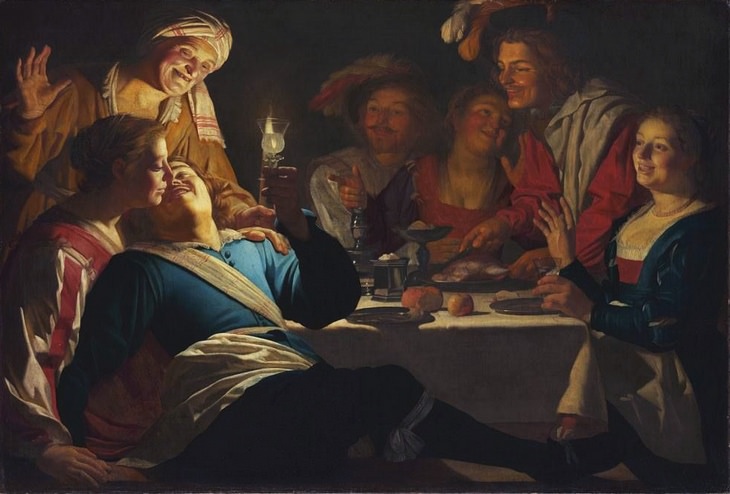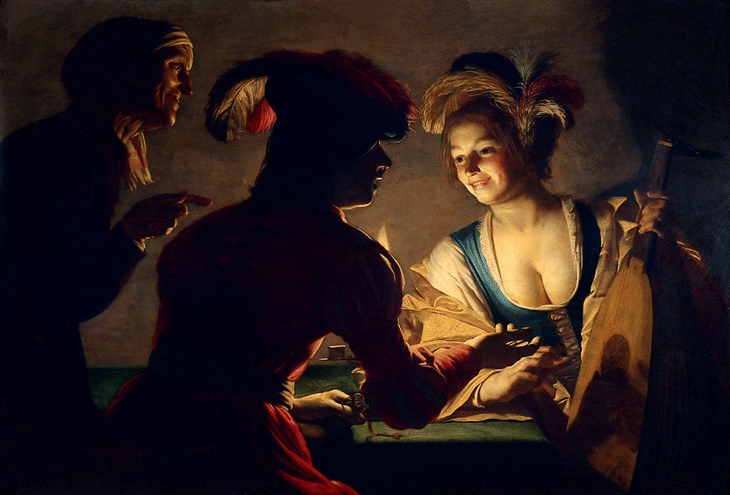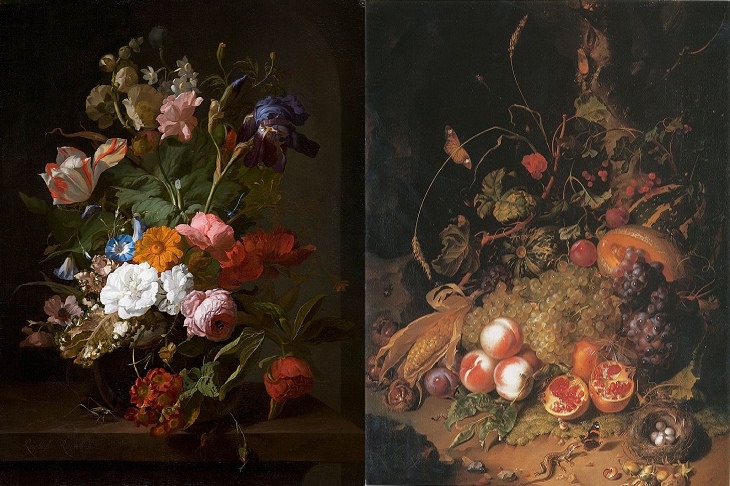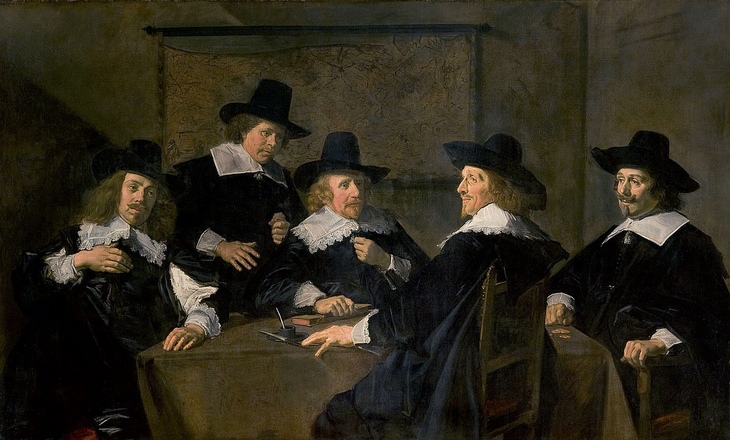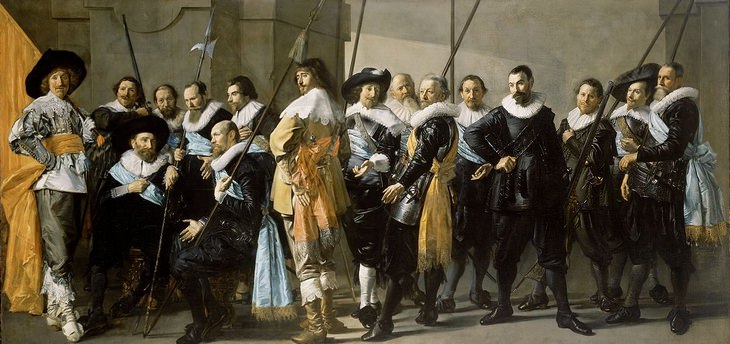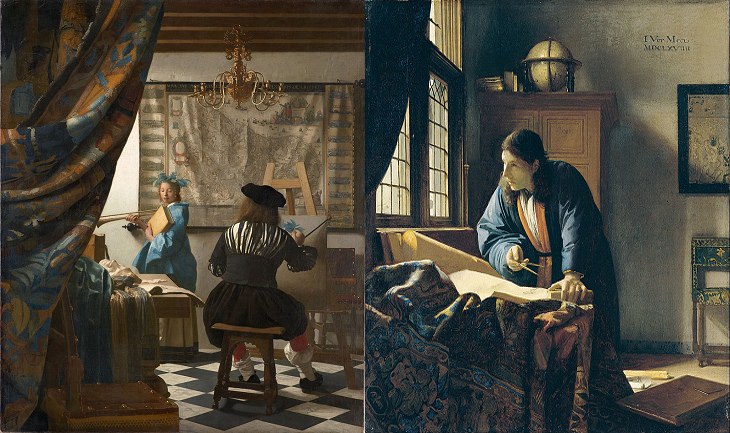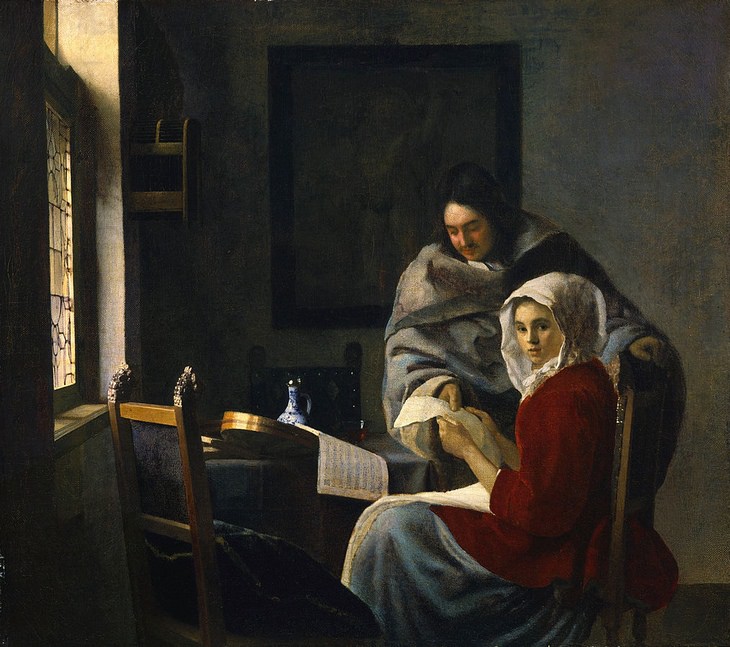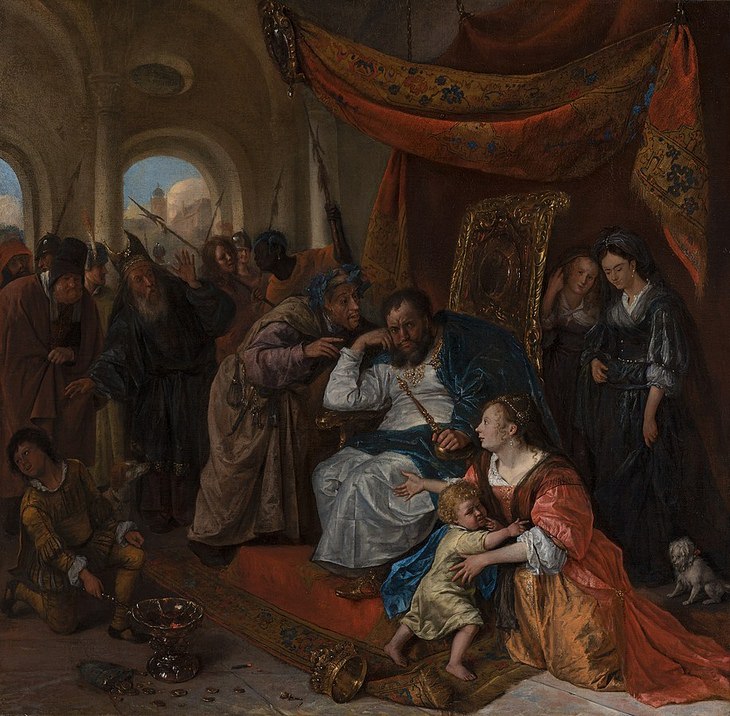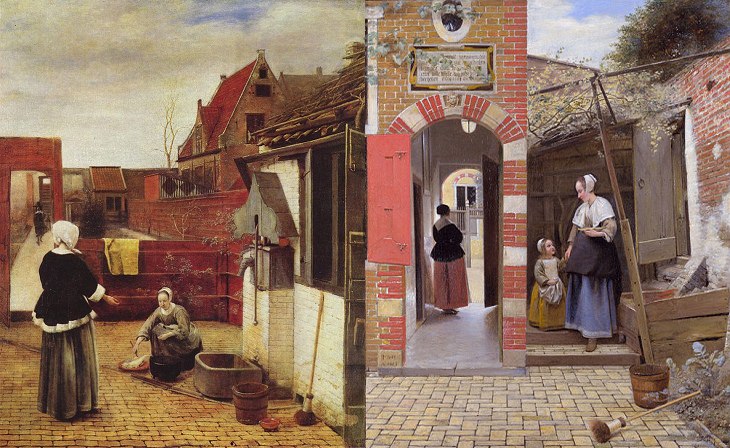1. Pieter Bruegel the Elder (1525-1569)
The Tower of Babel
The founder of a multigenerational dynasty of painters, Bruegel was one of the most important painters of the Dutch renaissance.
The Hunters
He is most famous for his richly-detailed landscapes, full of minutiae and action, as well as allegorical paintings, such as “The Blind Leading the Blind” and “The Triumph of Death”.
The Blind Leading the Blind
The Triumph of Death
2. Gerard van Honthorst (1592-1656)
The Prodigal Son
One of the most important names in Dutch paintings is an Italian one: Michelangelo Merisi da Caravaggio. The Milanese baroque painter gained fame for founding a new genre of portraits, employing dramatic plays of light on a darkened backdrop.
Childhood of Christ
This style became incredibly popular in the Netherlands, leading to a rise in Dutch artist imitating the style, particularly in the city of Utrecht. Of these, one of the most prolific was Gerard (Gerrit) van Honthorst. His mastery of this technique would go on to influence Rembrandt van Rijn, who never saw Caravaggio’s actual paintings.
The Matchmaker
3. Rachel Ruysch (1664-1750)
Left: Vase with Flowers, Right: Still Life with Fruit, a Nest and a Lizard
The Dutch school is notable, among other things, for producing a large number of female artists, relative to a time when Europe was still very much conservative. This is due to the fact that, while the Protestant Netherlands were deeply religious, there was a rather firm delineation between the public sphere and the church. The secularized societal structure allowed women more liberties, even though many women were declined from joining painters’ guilds.
Ruysch, one of the most successful women painters in the Netherlands and considered one of the best flower painters of all time, male or female, was eventually admitted into The Hague’s painters’ guild, alongside her husband. Her work left such an impression, that she was hired as court painter for Johann Wilhelm II, the elector-prince of the Palatinate, one of the most influential noblemen in the Holy Roman Empire.
4. Frans Hals (1582-1666)
Regents of St. Elizabeth's Hospital
The originator of a stroke style that will come to define Dutch painting through the works of Rembrandt and Van Gogh, Hals was a master of portraits who drew people of various classes and professions, from simple musicians, to inn proprietors and militiamen. He was the first artist to employ visible brushstrokes and “splotches” of color in his paintings, prioritizing overall impression over minutiae.
Meagre Company
The Lute Player
5. Johannes Vermeer (1632-1675)
Left: The Art of Painting, Right: The Geographer
What Hals started, Vermeer perfected. Perhaps the epitome of the Dutch Master, Johannes Vermeer is rightly viewed as one of the all-time greats. His paintings manage to masterfully and paradoxically blend the same type of non-committed brushwork with extreme attention to detail. The reason his portraits are so striking is how organic and genuine they look.
Girl Interrupted at Her Music
The people captured by his brush do not seem to be aware they are the subject of a portrait, rather that the artist merely captured them while they were minding their own business. In this, he could be considered the very first photographer.
6. Jan Steen (1626-1679)
The Wrath of Ahasuerus
For most of western art history, biblical paintings tended to focus on the New Testament or some very specific themes from the Old Testament (the original sin, for example). But following the Protestant reformation, iconoclastic attitudes made New Testament themes less popular, as they were seen as potentially idolatrous. Old Testament themes did not seem to be burdened by such debate.
Moses and Pharaoh's Crown
Coupled with an increased interest in the east due to contact with the Ottoman Empire and a surge in Jewish immigration from Portugal and Spain, portraits that depict stories from the Old Testament became increasingly popular in the Netherlands, and while previous biblical works tended to dress the cast in the finest of European fashion, Dutch artists like Jan Steen realized the Middle Eastern protagonists were more likely to have worn clothes like that of the Turks.
7. Pieter de Hooch (1629-1684)
Cardplayers in a Sunlit Room
A contemporary of Vermeer from the same city of Delft, de Hooch (pronounced “dé hoakh”) was just as fascinating with accurately capturing the mundane, the everyday happenings that have prior been ignored by artists. His outdoor paintings of the city are of particular note and give a vivid sense of what Delft must have been like during the 17th century.
Left: A Woman and Her Maid in a Courtyard, Right: A Courtyard of a House in Delft

